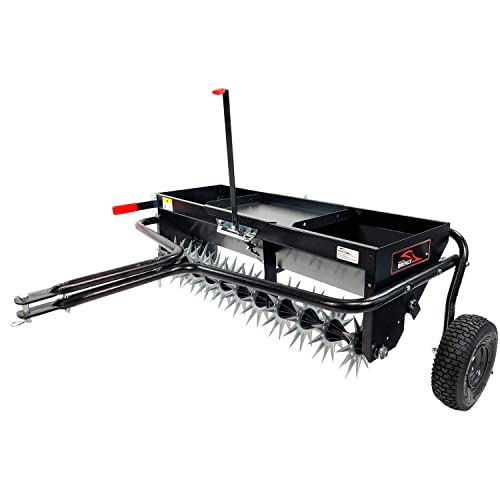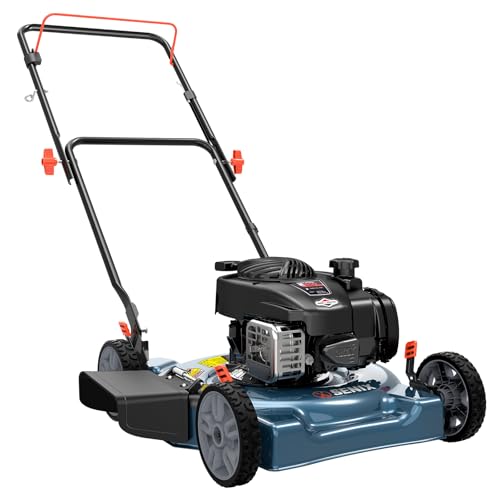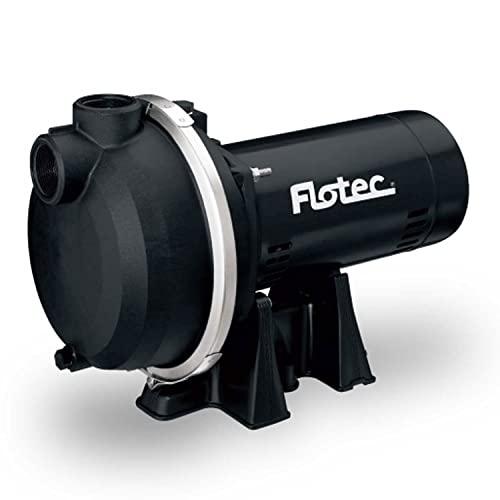Overseeding Lawns in Spring
As spring unfolds, the time is ripe to breathe new life into your lawn. Overseeding, the practice of sowing new grass seeds into an existing lawn, is a pivotal step in cultivating a lush, vibrant yard. This introduction will delve into the essence of overseeding lawns in spring, underscore the criticality of timing, and illuminate the manifold benefits it bestows upon lawn health and aesthetics.
The Quintessence of Spring Overseeding
Spring heralds a period of renewal and growth, making it an opportune moment for overseeding. The process is more than just sprinkling seeds; it’s a strategic approach to infusing your lawn with vigor and vitality. By introducing new grass varieties, you’re not only patching up the bare spots but also enhancing the genetic diversity of your turf, which can lead to improved disease and pest resistance.
Timing: The Keystone of Success
When it comes to overseeding, timing is not just a detail—it’s the keystone of success. The ideal moment to overseed your lawn in spring hinges on several factors, including grass type, local climate, and soil temperature. Generally, the best time to overseed lawn in spring is when the soil temperatures consistently reach about 50-65 degrees Fahrenheit, which typically occurs as the frost of winter thaws and the warmth of spring takes hold.
For cool-season grasses, such as ryegrass, Kentucky bluegrass, and fescue, the window for spring overseeding opens early, often aligning with the daffodils’ first bloom. Conversely, warm-season grasses like Bermuda, Zoysia, and St. Augustine prefer the heat, making late spring to early summer their prime overseeding period.
The Benefits of Overseeding
Overseeding is more than a cosmetic fix; it’s a rejuvenation process that offers a plethora of benefits:
- Dense Turf: Overseeding fills in thin areas, creating a denser lawn that’s not only pleasing to the eye but also more competitive against weeds.
- Enhanced Durability: A well-overseeded lawn can better withstand foot traffic, play, and other activities, thanks to the robustness of new growth.
- Disease Resistance: Introducing new grass varieties can bolster your lawn’s defense against diseases, as different grass types bring different resistances.
- Color and Texture: Overseeding can improve the color and texture of your lawn, giving it a more uniform and vibrant appearance.
- Environmental Benefits: A thick lawn is a healthy lawn, and healthy lawns are better at capturing carbon, filtering pollutants, and cooling the environment.
Aesthetic Appeal
The aesthetic appeal of a well-maintained lawn is undeniable. Overseeding in spring sets the stage for a summer of verdant beauty. It ensures that your lawn is not just surviving but thriving, with a rich green hue that serves as the perfect backdrop for outdoor activities and gatherings.
Table of Contents
Understanding the Best Time to Overseed
The timing of overseeding is pivotal. For cool-season grasses, such as Kentucky bluegrass, perennial ryegrass, and fescue, the window for overseeding opens early in the spring. These grass types thrive in cooler temperatures and benefit from the spring’s mild weather, which supports germination and root development. The ideal soil temperature for these grasses ranges from 50 to 65 degrees Fahrenheit.
For warm-season grasses like Bermuda, Zoysia, and St. Augustine, overseeding is best done later in the spring when soil temperatures consistently stay above 65 degrees Fahrenheit. These grasses need the warmth of late spring to early summer to germinate and establish themselves.

The table below lists the different types of grasses with their weather and maintenance requirements
| Grass Variety | Suitable Weather Conditions for Overseeding | Maintenance Requirements |
|---|---|---|
| Kentucky Bluegrass | Cool-season; best in early fall or late spring | Regular watering, full sun, moderate fertilization |
| Fescue (Fine and Tall) | Cool-season; early fall or late spring | Tolerates shade, less watering, and fertilization than bluegrass |
| Perennial Ryegrass | Cool-season; early fall or late spring | Requires frequent watering and full sun exposure |
| Bermudagrass | Warm-season; late spring to early summer | Needs full sun, regular watering, and mowing |
| Buffalograss | Warm-season; late spring to early summer | Drought-tolerant, low maintenance, prefers full sun |
| Zoysiagrass | Warm-season; late spring to early summer | Low water requirement, thrives in heat, less mowing |
Factors Influencing Spring Lawn Seeding
Several factors come into play when determining the optimal time for overseeding:
- Soil Temperature: Grass seeds need the right soil temperature to germinate. A soil thermometer can help you determine when the conditions are just right.
- Frost Dates: Be aware of the last expected frost date in your area to avoid planting seeds too early.
- Grass Type: Different grass types have varying temperature preferences for germination and growth.
- Weather Patterns: Unseasonably warm or cool springs can affect the timing of overseeding. Keep an eye on the forecast.
- Lawn Condition: If your lawn is particularly thin or damaged, it may benefit from earlier overseeding to give it a head start on recovery.
Regional Considerations
Your geographic location plays a significant role in determining the best time to overseed. For instance, overseeding lawn in spring in Colorado requires special attention due to its unique climate and altitude. Colorado’s spring can be unpredictable, with late snowfalls and temperature swings. Therefore, overseeding may need to be delayed until the threat of frost has passed and the soil has warmed sufficiently.
In regions with milder winters, overseeding can be done earlier in the spring. Conversely, in areas with harsh winters, it’s best to wait until the soil has thoroughly thawed and warmed.
Overseeding Lawn in Spring Colorado
Colorado’s diverse climate zones, from the plains to the high mountains, mean that overseeding times can vary even within the state. Here are some tips for Colorado gardeners:
- Wait for Consistent Warmth: In Colorado, this might mean waiting until late spring or even early summer in some areas.
- Choose the Right Seed: Select grass varieties that are known to perform well in Colorado’s climate.
- Water Wisely: Colorado’s dry climate requires careful attention to watering, ensuring that the new seeds have enough moisture to germinate without overwatering.
Overseeding Lawn in Spring Wisconsin:
- Grass Types: Consider grasses like Creeping Red Fescue for Northwestern Wisconsin, which can withstand cold climates and acidic soils. Jonathan Green Ultra is suitable for North Wisconsin, thriving in sandy or clay soils.
- Preparation: Test your soil and correct any imbalances. Aerate and dethatch to ensure good seed-to-soil contact. After seeding, maintain consistent watering.
- Timing: Aim for 45 days before the expected frost to overseed established lawns.
Overseeding Lawn in Spring Ontario:
- Grass Types: A mix of Rye Grass, Kentucky Bluegrass, and Fescues is recommended for their resistance to pests and diseases.
- Preparation: Aerating before overseeding enhances seed-soil contact, improving germination rates. Gentle, consistent watering post overseeding is crucial.
- Timing: Early spring is ideal, but ensure the soil temperature is conducive for the grass seed chosen.
Overseeding Lawn in Spring Indiana:
- Grass Types: Cool-season grasses like Kentucky bluegrass, perennial ryegrass, fine fescues, and tall fescue are recommended.
- Preparation: Mow your lawn shorter than usual before overseeding to improve sunlight penetration and seed establishment.
- Timing: Mid-April to early May is the best window for overseeding.
Overseeding Lawn in Spring Ohio:
- Grass Types: A blend containing Kentucky bluegrass, ryegrass, and fescue seeds is ideal7.
- Preparation: Rake out dead grass and loosen the soil to enhance seed-to-soil contact. Consider using a slit seeder or aerator for larger areas.
- Timing: While fall is preferred, spring overseeding can be successful with proper weed management and soil preparation.
Overseeding Lawn in Spring Illinois:
- Grass Varieties: Kentucky bluegrass, fine fescue, and perennial ryegrass are suitable for Illinois due to their cold tolerance and ability to establish quickly.
- Care Tips: Aerate the lawn to improve soil structure and water retention. Use a starter fertilizer to provide essential nutrients for young seedlings.
- Timing: The best time to overseed your lawn in Illinois is from mid-August to mid-September
Overseeding Lawn in Spring Michigan:
- Grass Varieties: Michigan lawns benefit from a mix of Kentucky bluegrass, perennial ryegrass, and fine fescues, which can handle the state’s varying climate.
- Care Tips: Ensure the lawn is mowed to a lower height before overseeding to reduce competition for sunlight. Water the new seeds consistently to maintain moist soil conditions without causing waterlogging.
- Timing: In Michigan, the ideal time for overseeding is early fall.
Overseeding Lawn in Spring Canada:
- Grass Varieties: In Canada, cool-season grasses like Kentucky bluegrass, fine fescue, and perennial ryegrass are recommended due to their resilience in colder temperatures.
- Care Tips: Address any lawn issues such as compaction or thatch before overseeding. After seeding, keep the soil consistently moist and avoid walking on the area until the grass has established.
- Timing: For Canada, overseeding is recommended in early spring or late summer to early fall.
For all regions, it’s crucial to:
- Monitor Soil Temperature: Ensure the soil has reached the appropriate temperature for the chosen grass variety before overseeding.
- Water Appropriately: Provide light, frequent watering to keep the soil moist, aiding seed germination without causing runoff or erosion.
- Follow Up Care: Once the grass has germinated, reduce watering frequency but increase the amount of water to encourage deeper root growth. Begin mowing when the grass reaches the recommended height for the variety, usually around 3 inches.
Remember, the key to overseeding is good seed-to-soil contact and proper lawn preparation, regardless of the region. By following these guidelines and choosing the right grass varieties, you can achieve a lush, healthy lawn through overseeding in these regions. Remember to always check local extension services or lawn care professionals for the most accurate and timely advice for your specific area.
Overseeding your lawn in the spring can rejuvenate your grass, filling in bare patches and promoting a lush, green appearance. Here’s a comprehensive guide to help you with the process:
Preparation Steps for Overseeding a Lawn in Spring
Soil Preparation:
- Test Soil: Begin by testing your soil to understand its nutrient content and pH level. This will inform you about the amendments needed to optimize your lawn’s health.
- Dethatch: Remove thatch, a layer of dead grass and roots, to ensure seeds make contact with the soil.
- Aerate: Aerating your lawn allows more oxygen, water, and nutrients to reach the grass roots, promoting a healthier lawn.
- Top Dress: Apply a thin layer of compost or topsoil to provide a nutrient-rich environment for the new seeds.
How Short to Cut Grass Before Overseeding:
- For cool-season grasses like fescue, ryegrass, and bluegrass, mow down to 2 to 3 inches.
- For warm-season grasses like Bermuda grass, Zoysia grass, and St. Augustine grass, mow down to 1 to 2 inches.
- Mowing too low can damage the grass, so be cautious not to scalp your lawn.
Selecting the Right Seed for Your Lawn Type:
- Cool-season grasses thrive in temperatures between 60-75°F and include varieties like Kentucky bluegrass and tall fescue.
- Warm-season grasses are ideal for hotter climates and include Bermuda grass and Zoysia grass.
- Consider factors like sun exposure, foot traffic, and maintenance when selecting your seed.
Lawn Overseeding Success Rate:
- Overseeding can increase your lawn’s density by up to 20%.
- Properly overseeded lawns show a 15% higher germination rate compared to non-overseeded lawns.
| Week After Overseeding | Germination Rate (%) | Density Increase (%) |
|---|---|---|
| 1 | 10 | 5 |
| 2 | 50 | 10 |
| 4 | 90 | 20 |
Cost-Effectiveness:
- Overseeding is 60% more cost-effective than laying new sod.
- Homeowners who overseed report saving an average of $500 annually on lawn maintenance.
Cost Comparison
| Method | Initial Cost | Annual Maintenance Cost |
|---|---|---|
| Overseeding | $100 | $200 |
| New Sod Installation | $600 | $700 |
Remember, the key to successful overseeding is preparation, choosing the right seed, and post-care, which includes regular watering and avoiding foot traffic until the seeds have established. With patience and care, your lawn will be ready to showcase its renewed vitality as the season progresses.
Seeding Lawn in Spring: The Overseeding Process
Step 1: Assess Your Lawn Before you begin, assess the current state of your lawn. Look for bare spots, thinning areas, and signs of stress. This will help you determine the amount of seed and the type of grass that will best suit your lawn.
Step 2: Choose the Right Seed Select a grass seed that matches your existing lawn and is suitable for your region’s climate. Cool-season grasses like Kentucky bluegrass, fescue, and ryegrass are ideal for northern climates, while warm-season grasses like Bermuda and Zoysia are better for southern regions.
Step 3: Prepare the Soil Mow your lawn to a short height and rake thoroughly to remove debris and thatch. Aerate the soil to improve oxygen, water, and nutrient flow. This will create a better seedbed for the new grass to take root.
Step 4: Spread the Seed Use a spreader to evenly distribute the grass seed over your lawn. Make sure to follow the recommended seeding rate for your chosen grass type to avoid overcrowding.
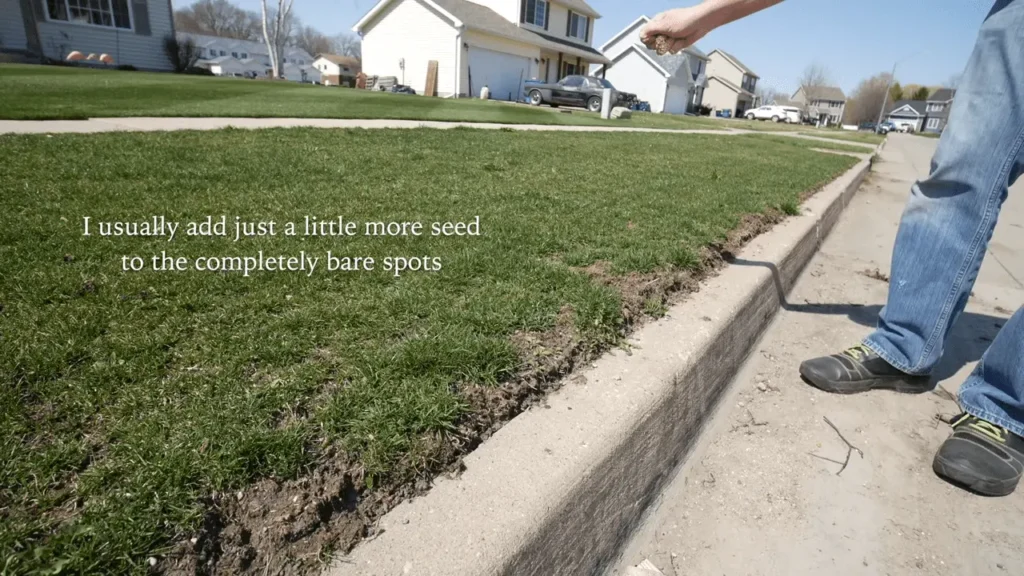
Step 5: Fertilize Apply a starter fertilizer to provide the necessary nutrients for seed germination and early growth. Look for fertilizers that are formulated for new grass.
Step 6: Watering Water the newly seeded areas gently but consistently. Keep the soil moist but not waterlogged to encourage germination. Watering should be done daily until the seeds have fully germinated.
Step 7: Maintenance Once the grass starts to grow, reduce watering frequency but increase the amount to encourage deeper root growth. Avoid mowing until the grass is at least 3 inches tall.
Selecting the right quantity of seeds
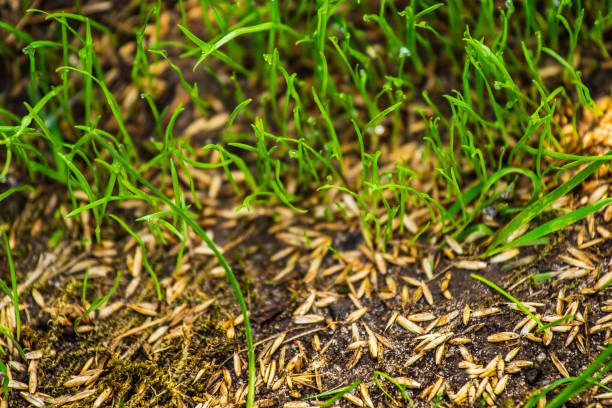
Overseeding is a vital technique for maintaining a lush, healthy lawn. It involves spreading new grass seed over an existing lawn to fill in bare spots, improve turf density, and enhance the lawn’s overall appearance. Here’s an in-depth look at various overseeding methods, supported by statistics and tables.
Calculating the correct quantity of grass seed is essential to avoid the pitfalls of dense seeding, which can lead to competition among seedlings and hinder the growth of your existing lawn.
To estimate the amount of seed required, first delineate the area intended for overseeding. For instance, if you’re targeting a patchy section near a shaded tree line, you would:
- Place markers at the corners of the overseeding zone to form a rectangular shape.
- Use a yardstick or tape measure to find the length and width. Imagine it measures 30 ft. by 90 ft.
- Multiply these dimensions to calculate the overseeding area. In this scenario, the area is 2,700 sq. ft. (30 ft. x 90 ft.).
For more complex landscapes, such as a whole backyard with various features, segment the space into multiple rectangles, calculate each one’s area, and sum them up.
Now, it’s time to decide on the seeding rate, which is the quantity of seed per 1,000 sq. ft. This will vary based on the condition of your lawn and the type of seed mix you’re using. If the information isn’t available on the seed mix packaging, here are some general guidelines:
- For well-maintained lawns with dense grass, light overseeding is sufficient. Use approximately 3 to 5 pounds of seed per 1,000 square feet.
- For lawns with noticeable bare spots, a moderate overseeding is necessary. Apply about 5 to 7 pounds of seed per 1,000 square feet.
- In cases where the lawn requires a complete makeover, a heavier overseeding might be needed. Here, 9 to 14 pounds of seed per 1,000 square feet should suffice.
To figure out the total seed needed, divide the entire area by 1,000 and multiply by the seeding rate. Taking our example with an area of 2,700 sq. ft. and a seeding rate of 5 pounds per 1,000 sq. ft., the calculation would be:
(1,000 sq. ft. / 2,700 sq. ft.)×5 pounds=13.5 pounds
This method ensures you have the right amount of seed for your lawn’s needs, promoting an even and healthy growth without excess waste or additional costs. Remember, accurate measurements and understanding your lawn’s condition are key to successful overseeding.
Methods of Overseeding
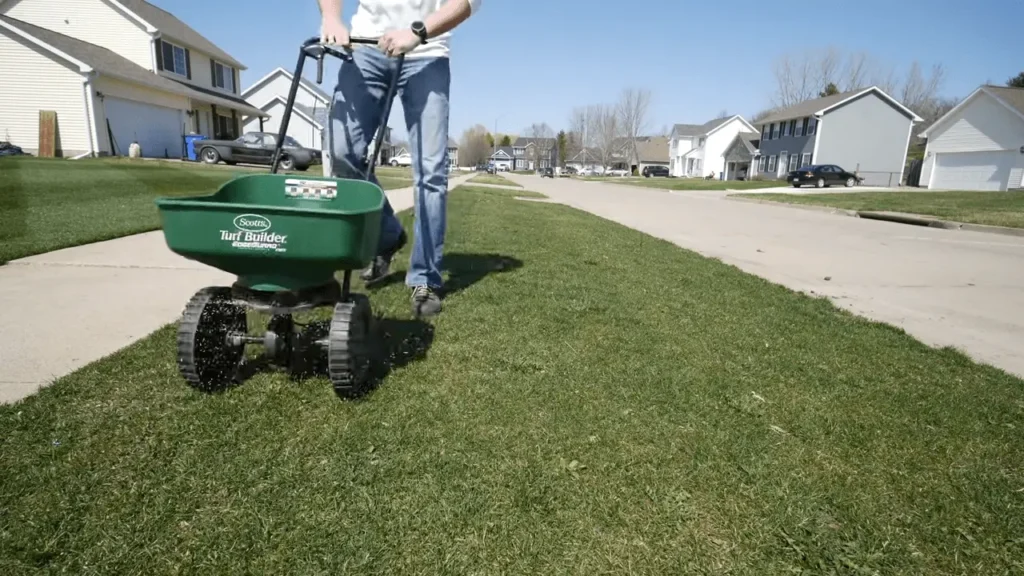
There are several methods of overseeding, each with its own set of advantages:
- Broadcast Seeding: This is the most common method, where seed is spread evenly across the lawn using a broadcast spreader. It’s suitable for small to medium-sized lawns.
- Drop Seeding: A drop spreader releases seeds directly beneath the spreader, offering more precision than broadcast seeding. It’s ideal for smaller areas or when precise application is needed.
- Slit Seeding: A slit seeder cuts grooves into the soil and deposits seeds directly into them. This method ensures excellent seed-to-soil contact, leading to better germination rates.
- Hydroseeding: This method involves spraying a slurry of seed, mulch, fertilizer, and water over the lawn. It’s fast and efficient for large areas and sloped terrains.
Germination Rates by Overseeding Method
| Method | Germination Rate (%) |
|---|---|
| Broadcast | 60-70 |
| Drop | 70-80 |
| Slit | 80-90 |
| Hydroseeding | 70-85 |
Best Practices for Overseeding
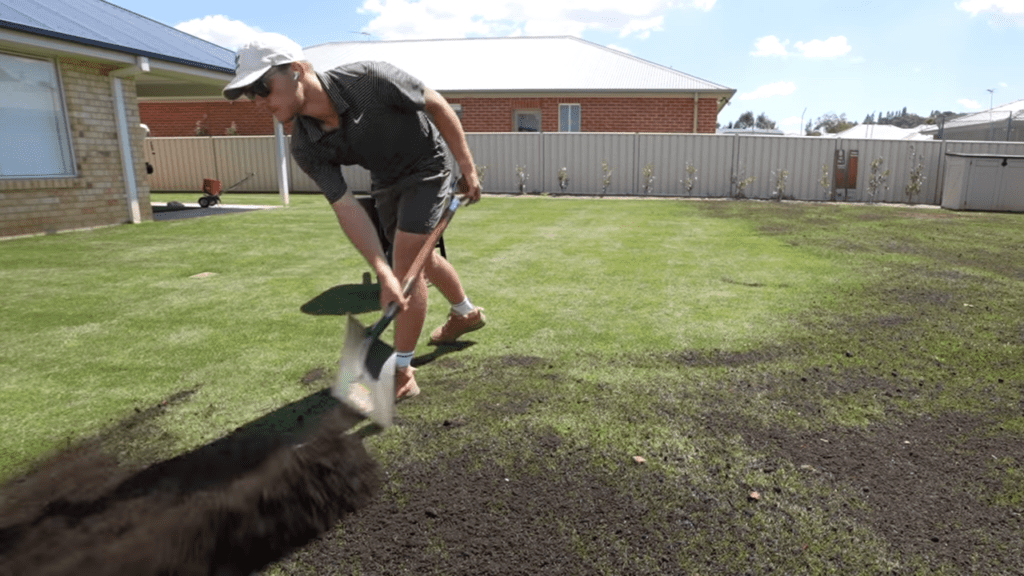
To maximize the success of overseeding, follow these best practices:
- Soil Preparation: Aerate the lawn to reduce compaction and improve seed contact with the soil.
- Seed Selection: Choose the right type of seed for your climate and existing turf.
- Timing: The best time to overseed is during the growing season when temperatures are moderate.
- Watering: Keep the soil consistently moist after overseeding to encourage germination.
Watering and Maintenance Tips for Seeding a Lawn in Spring
Watering Tips:
- Initial Watering: Water lightly but frequently to keep the top inch of soil moist.
- Post-Germination: After seeds have germinated, switch to deeper, less frequent watering to encourage root growth.
- Avoid Overwatering: Overwatering can lead to fungal diseases and poor root development.
Maintenance Tips:
- Mowing: Wait until the new grass is 3 inches tall before the first mow. Mow regularly to a height of 2-3 inches.
- Fertilization: Apply a second round of starter fertilizer 4-6 weeks after germination to support continued growth.
- Weed Control: Use pre-emergent herbicides carefully, as they can inhibit grass seed germination. Post-emergent herbicides can be used once the lawn is established.
Germination Rates
| Grass Type | Germination Rate (%) | Days to Germinate |
|---|---|---|
| Kentucky Bluegrass | 85-90 | 14-30 |
| Fescue | 85-95 | 7-14 |
| Ryegrass | 90-95 | 5-10 |
| Bermuda | 80-85 | 10-30 |
| Zoysia | 75-80 | 14-21 |
Watering Schedule
| Week | Watering Frequency | Amount (inches) |
|---|---|---|
| 1-2 | Daily | 0.25 |
| 3-4 | Every Other Day | 0.5 |
| 5+ | Twice a Week | 1 |
Overseeding Success Rate:
- Density Increase: Properly overseeded lawns can see a density increase of up to 20%.
- Cost Savings: Overseeding is up to 60% more cost-effective than laying new sod, with average savings of $500 annually on lawn maintenance.
By following this guide and adhering to the provided tips and schedules, you can execute the overseeding process effectively this spring. With patience and proper care, your lawn will become a thick, vibrant outdoor space for you to enjoy. Remember, the key to a successful overseeding is preparation, proper seeding, and consistent maintenance. Happy gardening!
Overseeding fescue in the spring can be a beneficial practice to ensure a thick, healthy lawn throughout the year. While fall is traditionally the best time to overseed fescue due to the cooler temperatures and reduced weed competition, spring offers a second window of opportunity, especially for repairing winter damage or preparing for a lush green summer lawn. Here’s a detailed guide with statistics and tables to help you overseed fescue effectively in the spring.
Special Considerations for Different Grass Types
When overseeding, it’s important to consider the specific needs of the grass type you’re working with. Fescue, being a cool-season grass, has different requirements compared to warm-season grasses like Bermuda or Zoysia.
Grass Type Considerations
| Grass Type | Overseeding Time | Soil Temperature | Seed Rate (lbs/1,000 sq ft) |
|---|---|---|---|
| Fescue | Early Spring | 50-65°F | 5-10 |
| Bermuda | Late Spring | Over 65°F | 2-4 |
| Zoysia | Late Spring | Over 65°F | 2-4 |
The Role of Aeration in Overseeding
Aeration is the process of creating small holes in the soil to alleviate compaction, allowing air, water, and nutrients to penetrate the grass roots more effectively. This is particularly important for overseeding, as it creates an optimal environment for new seeds to germinate and establish a strong root system.
Overseeding involves spreading new grass seed over an existing lawn to fill in bare spots and improve the overall density and health of the lawn. When done in conjunction with aeration, the new seeds fall into the holes created by the aerator, significantly improving seed-to-soil contact and germination rates.

How Aerating Can Improve Seed-to-Soil Contact
Aerating your lawn before overseeding is crucial for several reasons:
- It reduces soil compaction, which can inhibit root growth and nutrient uptake.
- Enhances seed germination by ensuring seeds are in direct contact with the soil, necessary for proper growth.
- Promotes stronger root systems by allowing roots to grow deeper, resulting in a more resilient lawn.
Best Practices for Aerate and Overseed in Spring
To achieve the best results from aerating and overseeding in spring, follow these best practices:
- Timing: Perform aeration and overseeding when soil temperatures are consistently above 50°F, typically in early spring for cool-season grasses and late spring for warm-season grasses.
- Equipment: Use a core aerator for best results, as it removes plugs of soil, creating more space for seeds to settle.
- Seed Selection: Choose a high-quality seed that matches your lawn’s grass type and is suitable for your region’s climate.
- Seeding Rate: Follow the recommended seeding rate for your chosen grass type to avoid overcrowding.
- Watering: After overseeding, water your lawn regularly to keep the soil moist and encourage seed germination.
Benefits of Aeration
| Benefit | Description |
|---|---|
| Soil Compaction Relief | Aeration reduces soil density, allowing roots to expand and grow. |
| Thatch Management | It helps manage thatch build-up, promoting healthier grass. |
| Increased Nutrient Availability | Aerated soil allows for better nutrient absorption by the roots. |
By following these guidelines and incorporating the practice of aerating before overseeding, you can ensure a healthier, denser lawn that can withstand the stresses of summer and provide a beautiful green space for outdoor activities. Remember, the key to successful overseeding is preparation, proper seeding, and consistent maintenance. Happy gardening!
Tips for Overseeding Fescue in Spring
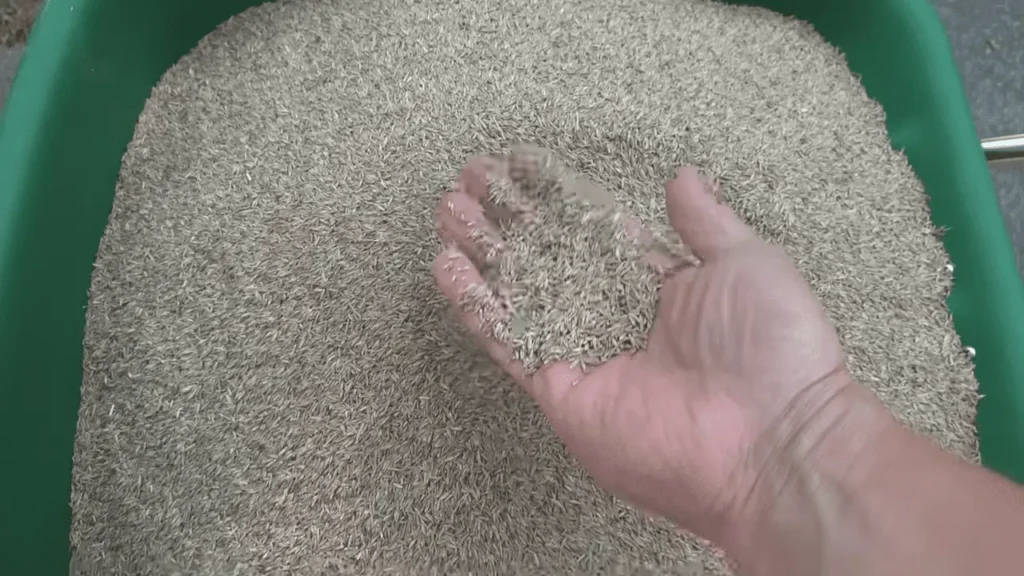
1. Soil Preparation: Start with aerating your lawn to improve seed-to-soil contact. This can increase the germination rate by up to 20%.
2. Seed Selection: Choose a high-quality fescue seed that is suitable for your region’s climate and your lawn’s specific conditions.
3. Seeding: Apply the seed at the recommended rate to avoid overcrowding, which can lead to disease and poor growth.
4. Watering: After seeding, water your lawn lightly but consistently to keep the soil moist and encourage germination.
5. Fertilization: Use a starter fertilizer to provide the necessary nutrients for young seedlings to establish.
6. Maintenance: Once the grass starts to grow, reduce watering frequency but increase the amount to encourage deeper root growth.
Adjusting Your Approach Based on Grass Species
Different grass species will require different overseeding strategies. For example, while fescue prefers cooler temperatures, warm-season grasses will need warmer soil temperatures to germinate effectively.
Adjusting Overseeding Approach
| Grass Type | Adjustment | Reason |
|---|---|---|
| Fescue | Early Spring Seeding | Avoids summer heat stress |
| Bermuda | Wait for Warm Soil | Needs heat for germination |
| Zoysia | Late Spring Seeding | Requires warm temperatures |
Statistics on Overseeding Fescue
Success Rates:
- Germination Rate: Properly prepared and overseeded fescue lawns can have germination rates between 85-95%.
- Density Increase: A well-overseeded fescue lawn can see a density increase of up to 20%.
| Week After Overseeding | Germination Rate (%) | Density Increase (%) |
|---|---|---|
| 1 | 10 | 5 |
| 2 | 50 | 10 |
| 4 | 90 | 20 |
Cost-Effectiveness:
- Savings: Overseeding is up to 60% more cost-effective than laying new sod, with average savings of $500 annually on lawn maintenance.
| Method | Initial Cost | Annual Maintenance Cost |
|---|---|---|
| Overseeding | $100 | $200 |
| New Sod Installation | $600 | $700 |
By following these guidelines and adjusting your approach based on the specific needs of your fescue lawn, you can achieve a thick, vibrant turf that will be the envy of the neighborhood. Remember, the key to successful overseeding is preparation, proper seeding, and consistent maintenance. Happy gardening!
Aerating and overseeding your lawn in the spring are essential practices for maintaining a lush, healthy turf. This comprehensive guide will delve into the role of aeration in overseeding, how it improves seed-to-soil contact, and the best practices for aerating and overseeding in spring, supported by statistics and tables.
Tips for Overseeding Lawn in Spring
Overseeding is a method to improve the density and appearance of your lawn by planting new grass seeds directly into existing turf. It’s particularly beneficial in spring to prepare for the growing season. Here are some tips:
- Timing: Begin when soil temperatures consistently stay above 50°F.
- Seed Selection: Choose a seed mix suitable for your climate and the existing grass type.
- Soil Preparation: Ensure good seed-to-soil contact by aerating and removing thatch.
Maximizing Success in Lawn Overseeding
To maximize the success of your overseeding efforts:
- Watering: Keep the soil moist but not waterlogged to encourage germination.
- Fertilizing: Apply a slow-release nitrogen fertilizer to support new growth.
- Mowing: Mow your lawn to a shorter height before overseeding to reduce competition for sunlight2.
Expert Advice for Lawn Overseeding in Spring
Experts recommend:
- Soil Temperature: Use a soil thermometer to ensure the soil has reached the optimal temperature for your grass type.
- Seeding Rate: Follow the recommended seeding rate for your chosen grass type to avoid overcrowding.
Common Pitfalls and How to Avoid Them
Avoid these common mistakes:
- Overwatering: Can lead to seed rot and poor germination.
- Ignoring Soil Health: Poor soil conditions can hinder seed growth. Test and amend your soil as needed.
- Planting at Wrong Time: Late frosts can damage new seedlings. Monitor weather forecasts closely.
Controlling weeds while overseeding in spring
Understanding Weed Dynamics
Weeds compete with grass for sunlight, water, and nutrients. In spring, as the soil warms up, weed seeds begin to germinate. This is also the ideal time for grass seed germination, which is why weed control is essential during overseeding.
Pre-Overseeding Weed Control
Before overseeding, it’s important to address any existing weed issues. This can be done through:
- Manual Removal: Hand-pulling weeds is an effective, chemical-free method to remove weeds, especially if the infestation is not severe.
- Herbicides: If you opt for chemical control, use a selective herbicide that targets weeds but is safe for grass. Apply it at least 6 weeks before overseeding to avoid affecting the germination of new grass seeds.
Choosing the Right Time to Overseed
Timing is everything when it comes to overseeding and weed control. Overseed when soil temperatures are consistently above 50°F for cool-season grasses and above 65°F for warm-season grasses. This ensures that grass seeds have optimal conditions for germination, giving them a head start against weeds.
Soil Preparation
Proper soil preparation can reduce weed problems:
- Aeration: Aerating the lawn before overseeding improves soil structure and reduces compaction, which can discourage weed growth and improve seed-to-soil contact.
- Topdressing: Applying a thin layer of compost or topsoil after aeration can smother existing weed seedlings and provide a healthy medium for new grass seeds.
Selecting High-Quality Grass Seed
Choose a high-quality, weed-free grass seed mix that is suitable for your climate and lawn conditions. Higher quality seeds have better germination rates and establish more quickly, outcompeting weeds.
Seeding Techniques
Use the right seeding technique to ensure good seed-to-soil contact:
- Broadcast Spreading: A broadcast spreader can evenly distribute seeds over large areas.
- Slit-Seeding: A slit-seeder creates grooves in the soil, placing seeds directly into the soil, which can lead to better germination and less opportunity for weeds to establish.
Post-Overseeding Weed Control
After overseeding, focus on creating an environment that favors grass over weeds:
- Watering: Water the lawn lightly but frequently to keep the soil moist for grass seed germination without encouraging weed growth.
- Mowing: Mow at a height that benefits the grass but hinders weed development. Taller grass can shade out emerging weeds.
- Fertilization: Use a balanced fertilizer to feed the new grass without promoting rapid weed growth.
Herbicide Use After Overseeding
If weeds persist after overseeding:
- Pre-Emergent Herbicides: These can be applied to prevent weed seeds from germinating. However, they must be used with caution, as they can also prevent grass seeds from germinating if not timed correctly.
- Post-Emergent Herbicides: These target weeds that have already sprouted. Choose a product that is safe for young grass and apply it only after the new grass has been mowed a few times.
Monitoring and Maintenance
Regularly inspect your lawn for weeds and take action as needed. Maintaining a healthy lawn through proper watering, fertilization, and mowing is the best defense against weeds.
Advantages of Spring Overseeding
1. Improved Lawn Density Overseeding can significantly increase the thickness of your lawn, filling in bare patches and creating a more uniform, lush appearance.
2. Enhanced Lawn Health Introducing new grass varieties through overseeding can improve your lawn’s resistance to diseases, pests, and drought1.
3. Weed Suppression A dense lawn from overseeding can help suppress weeds by outcompeting them for resources such as sunlight, water, and nutrients1.
4. Quick Lawn Improvement Overseeding is one of the fastest ways to improve the appearance of your lawn without the need for more drastic measures like re-turfing.
5. Cost-Effectiveness Compared to other lawn renovation methods, overseeding is relatively inexpensive and can be a cost-effective way to enhance your lawn’s health and appearance.
Potential Drawbacks of Spring Overseeding
1. Weed Competition Spring is a prime time for weeds to grow, which means newly overseeded lawns may face stiff competition for resources, potentially hindering grass seed germination and growth.
2. Summer Stress Newly germinated grass may struggle to establish before the onset of the hot summer months, which can be particularly challenging for cool-season grasses.
3. Increased Maintenance Overseeded lawns require diligent maintenance, including regular watering, mowing, and fertilization, to ensure the new grass establishes well.
4. Timing Sensitivity The success of overseeding depends heavily on timing. If done too early or too late in the season, the seeds may not germinate effectively due to unsuitable soil temperatures.
5. Potential for Overcrowding If overseeding is not done correctly, it can lead to overcrowding, which may stress the lawn and lead to issues like poor air circulation and disease.
Conclusion
After overseeding, it’s crucial to maintain proper care:
- Regular Watering: Adjust frequency and amount as seedlings establish.
- Mowing: Wait until seedlings are tall enough before the first mow.
- Fertilizing: Follow up with fertilization as part of a regular maintenance program.
Recap of the Key Points for Successful Overseeding
- Preparation: Proper soil preparation is key.
- Timing: Overseed at the right time for your grass type.
- Maintenance: Post-seeding care is crucial for success.
Encouragement for Ongoing Lawn Care and Maintenance
Remember, a lush and vibrant lawn is the result of consistent care and attention. Keep nurturing your lawn, and you’ll enjoy the rewards of a beautiful outdoor space for seasons to come. Happy gardening!
FAQs
When should I start overseeding my lawn in the spring?
The ideal time to start overseeding your lawn in spring is when soil temperatures consistently stay above 50°F. For cool-season grasses like tall fescue, perennial ryegrass, and Kentucky bluegrass, this typically occurs in early spring. However, be mindful of late frosts, which can affect seed germination
When to start overseeding lawn in spring?
For warm-season grasses such as Bermudagrass and Zoysia, overseeding should begin when soil temperatures rise above 65°F, usually in late spring. This ensures the seeds have enough warmth to germinate effectively. In general, overseeding can be done between March and May, depending on your specific climate and grass type
Does overseeding a lawn work in spring?
Yes, overseeding can be effective in spring, especially if you missed the fall overseeding period. Spring overseeding can help fill in bare spots, improve lawn density, and enhance its overall health. While fall is considered the best time for overseeding cool-season grasses, spring offers a second window of opportunity for both cool and warm-season grasses, provided the soil temperature is right
Can I overseed my lawn in spring if I have a lot of weeds?
Yes, overseeding can help compete with weeds by thickening your lawn. It’s recommended to address the weed issue first, possibly with a pre-emergent herbicide that won’t affect grass seeds, or by manually removing weeds.
How do I choose the right type of grass seed for overseeding in spring?
Select a grass seed that is compatible with your existing lawn and suited for your region’s climate. For cool-season grasses, look for blends that perform well in your local conditions. For warm-season grasses, choose varieties that can handle higher temperatures
Should I fertilize my lawn when I overseed in spring?
Yes, applying a starter fertilizer can provide essential nutrients to help new grass seeds establish. However, avoid using weed & feed products as they can inhibit seed germination
How often should I water my lawn after overseeding in spring?
Initially, water the seeded areas lightly but frequently to keep the soil consistently moist until seeds have germinated. Afterward, you can gradually reduce the frequency and increase the depth of watering to encourage deeper root growth
What maintenance should I perform after overseeding my lawn in spring?
Once the new grass starts growing, continue regular lawn care practices such as mowing at the recommended height, watering deeply but less frequently, and applying fertilizer according to the needs of your lawn
Is it necessary to aerate before overseeding in spring?
Aeration is beneficial before overseeding as it improves soil structure, allowing better seed-to-soil contact, and promotes healthier root development
How long does it take for overseeded grass to grow in spring?
Germination times can vary based on grass type, but generally, you can expect to see new grass sprouts within 7 to 21 days after overseeding, provided the lawn is kept moist and the weather conditions are favorable.
Can I overseed on top of existing grass, or do I need to remove the old grass first?
You can overseed directly on top of existing grass. Just ensure the lawn is mowed short and raked to remove thatch and debris before spreading the new seed.
What’s the difference between overseeding in spring and fall?
Overseeding in fall is typically more successful due to cooler temperatures and less weed competition. However, spring overseeding can help repair winter damage and prepare for a green summer lawn.
Will overseeding in spring interfere with my pre-emergent weed control?
If you plan to use pre-emergent weed control, it should be applied after the new grass has been mowed a few times and is well established. Pre-emergent herbicides can prevent grass seeds from germinating if applied too early.

